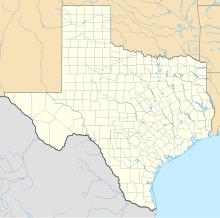Lyndon Baines Johnson Foundation
 |
|
 |
|
| Location | Austin, Texas, United States |
|---|---|
| Coordinates | 30°17′09″N 97°43′45″W / 30.2857°N 97.7292°WCoordinates: 30°17′09″N 97°43′45″W / 30.2857°N 97.7292°W |
| Dedicated | May 22, 1971 |
| Named for | Lyndon B. Johnson |
| Architect | Gordon Bunshaft of Skidmore, Owings & Merrill |
| Size | 14 acres (57,000 m²) |
| Management | National Archives and The University of Texas at Austin |
| Website | LBJ Presidential Library |
The Lyndon Baines Johnson Library and Museum, also known as the LBJ Presidential Library, is the presidential library and museum of Lyndon Baines Johnson, the 36th President of the United States (1963–1969). It is located on the grounds of the University of Texas at Austin, and is one of 13 Presidential Libraries administered by the National Archives and Records Administration. The LBJ Library houses 45 million pages of historical documents, including the papers of President Johnson and those of his close associates and others.
The Library was dedicated on May 22, 1971, with Johnson and then-President Richard Nixon in attendance. The library's director, Presidential historian Mark K. Updegrove, resigned his position in February 2017. The director's position is currently vacant. The complex, designed by Skidmore, Owings & Merrill architects Gordon Bunshaft and R Max Brooks is an unadorned 10-story travertine monolith.[1]
President Johnson is buried at his ranch, near Johnson City, Texas, at the Lyndon B. Johnson National Historical Park. After her death in July 2007, the body of Lady Bird Johnson lay in repose in the Library and Museum, just as her husband's had after his death, 34 years earlier in January 1973.
In 2012, the LBJ Library underwent a multimillion-dollar redesign, during which most of the exhibits were closed. On December 22, the Library reopened to the public. In 2013, the Library began charging admission for the first time since its dedication in 1971.
...
Wikipedia


